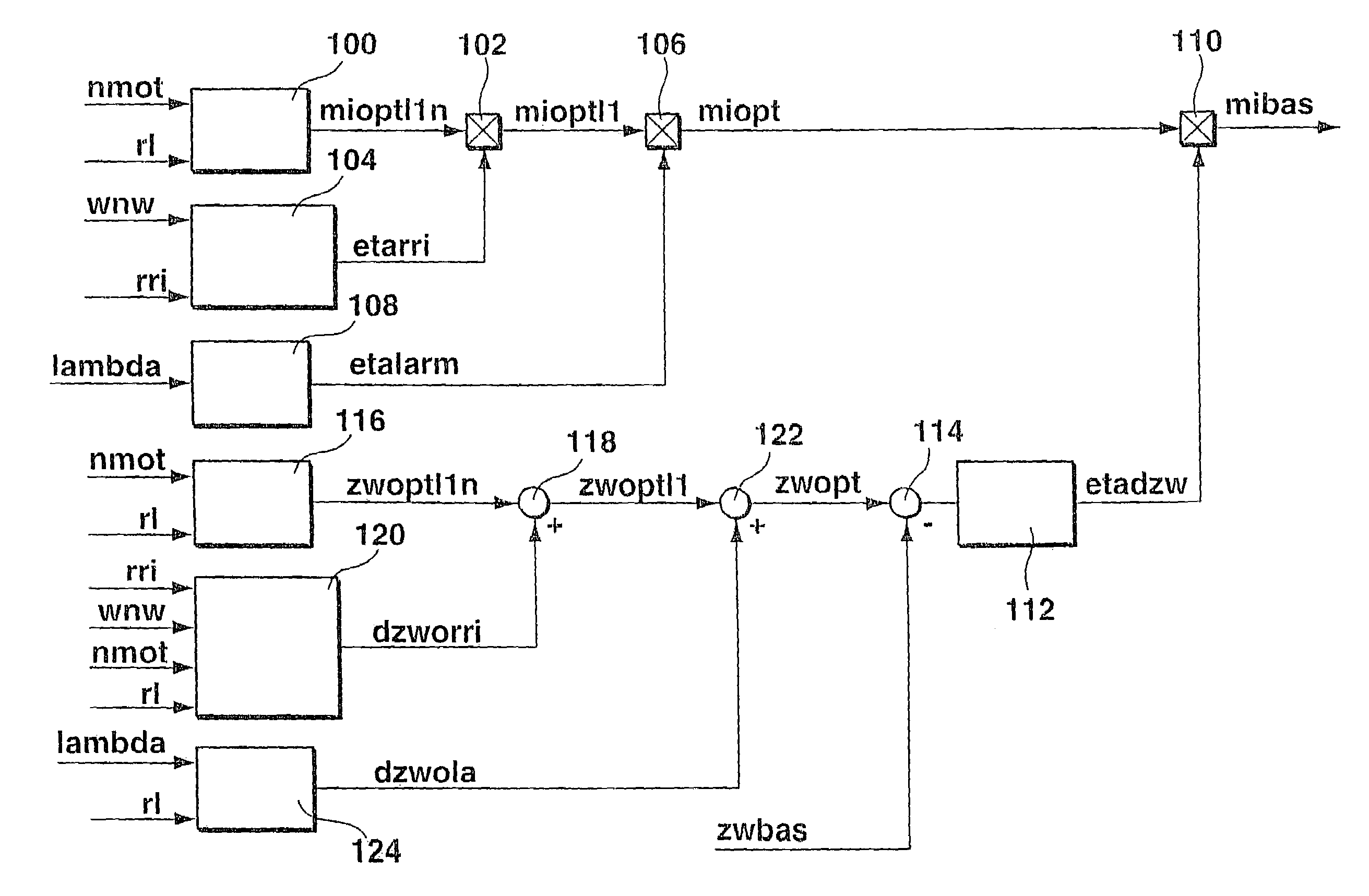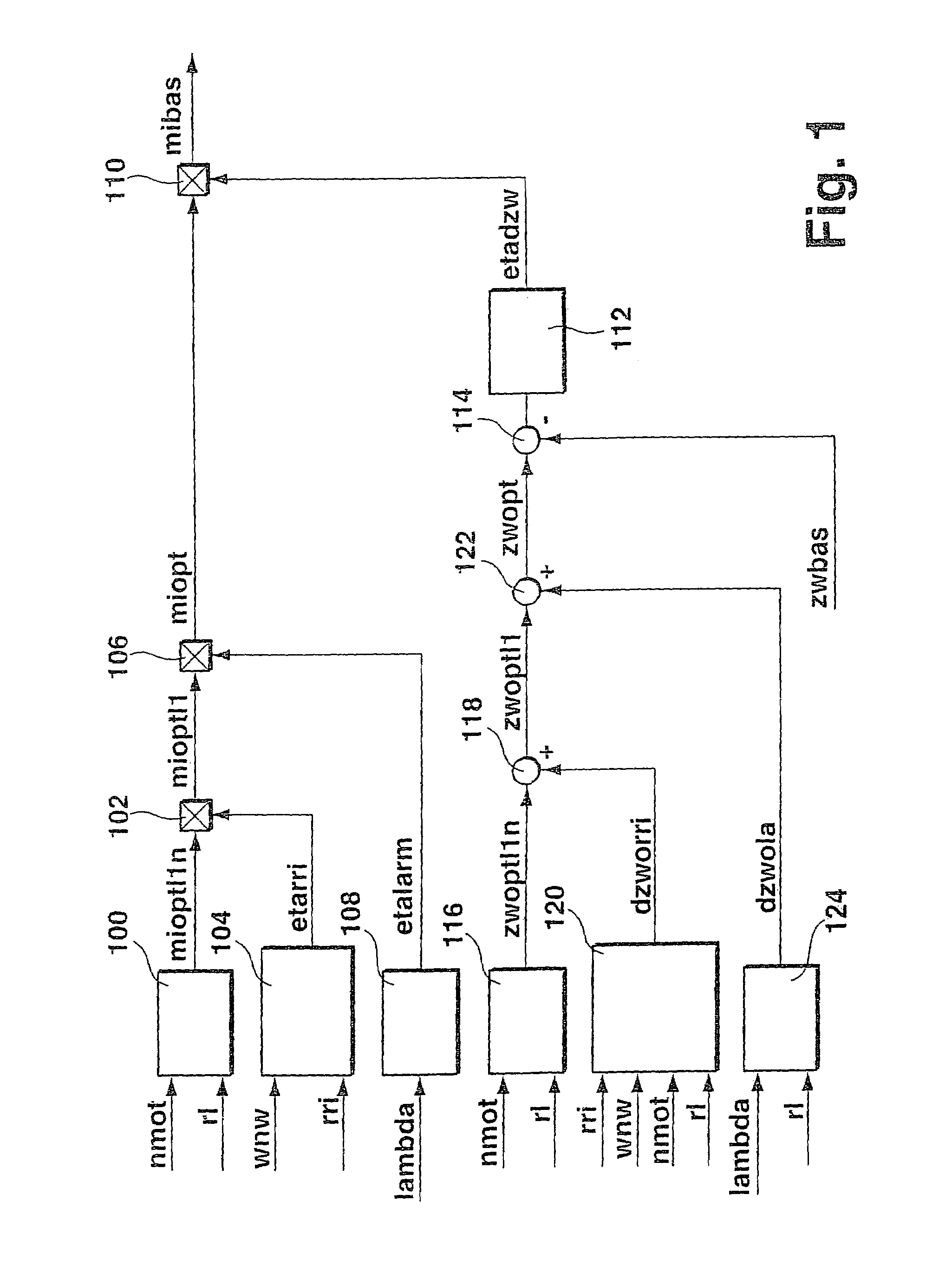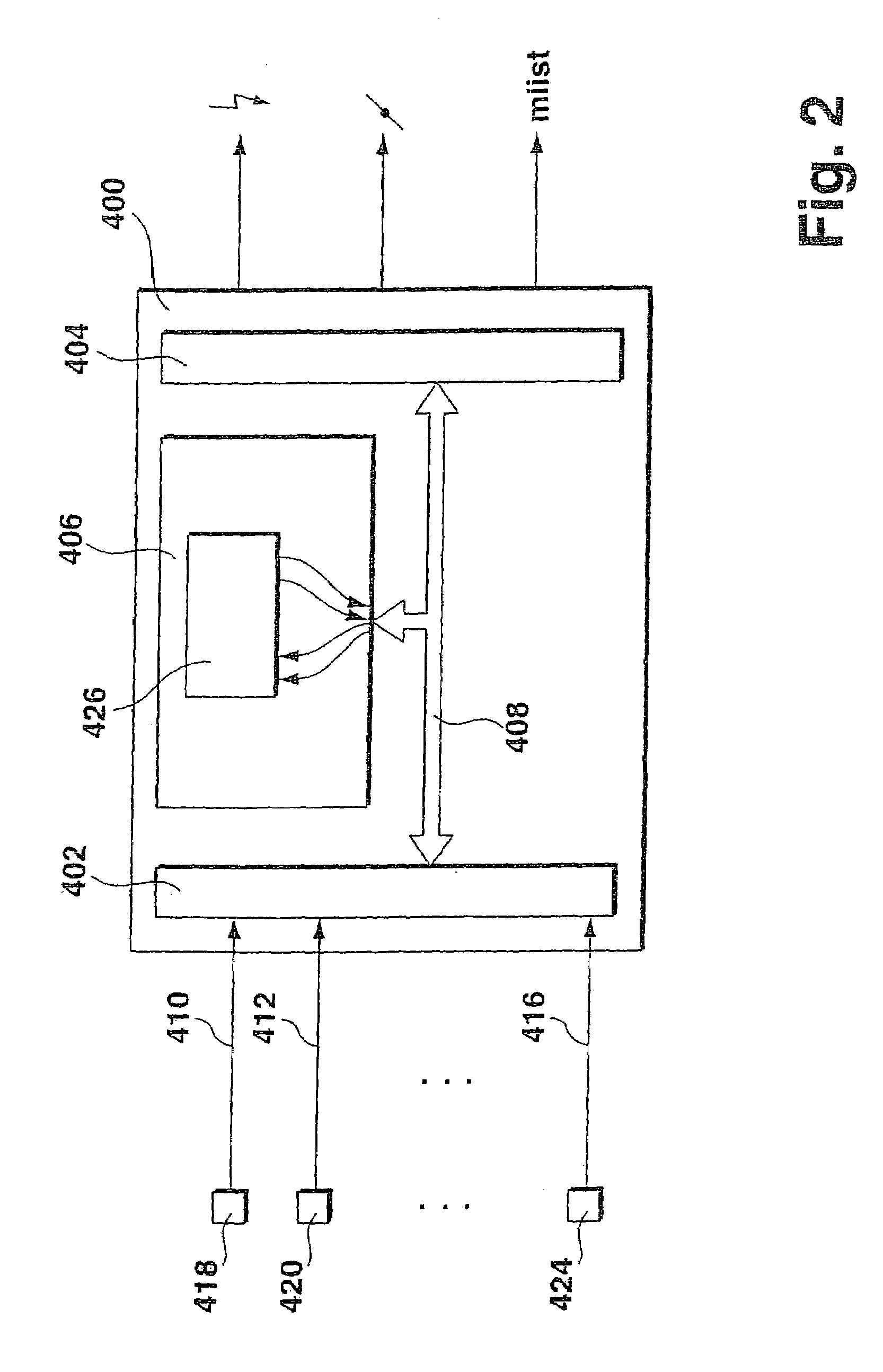Method and device for controlling an internal combustion engine
a technology of internal combustion engine and control device, which is applied in the direction of electric control, ignition automatic control, instruments, etc., can solve the problems of inability to accurately calculate the torque of calculated basic variables, inability to take into account the different slopes of the correlation between ignition angle and the ignition state, and inability to achieve accurate torque calculation. calculation, the effect of simplifying the model's application
- Summary
- Abstract
- Description
- Claims
- Application Information
AI Technical Summary
Benefits of technology
Problems solved by technology
Method used
Image
Examples
Embodiment Construction
[0025]FIG. 1 shows a flow chart of a first exemplary embodiment for improving the torque model. FIG. 1 describes a program of a microcomputer, the individual elements of the drawing in FIG. 1 representing programs, program steps or program parts, while the arrows describe the flow of information. Shown is the calculation of the actual basic torque, i.e., the torque that results when the basic ignition angle is set, which is selected from a characteristics map as a function of speed and load.
[0026]A correction of the optimum torque value takes place in the model shown in FIG. 1, taking the inert-gas rate and the charge movement into account, and a correction of the optimum ignition angle value, taking the inert-gas rate and the charge movement into consideration, and thus the instantaneous working point.
[0027]In a first ignition map 100, a value mioptlln for the optimum torque is read out as a function of engine speed nmot and actual charge rl, which is determined from the measured a...
PUM
 Login to View More
Login to View More Abstract
Description
Claims
Application Information
 Login to View More
Login to View More - R&D
- Intellectual Property
- Life Sciences
- Materials
- Tech Scout
- Unparalleled Data Quality
- Higher Quality Content
- 60% Fewer Hallucinations
Browse by: Latest US Patents, China's latest patents, Technical Efficacy Thesaurus, Application Domain, Technology Topic, Popular Technical Reports.
© 2025 PatSnap. All rights reserved.Legal|Privacy policy|Modern Slavery Act Transparency Statement|Sitemap|About US| Contact US: help@patsnap.com



